A $140 Billion Deep Sinkhole, or New Orleans 20 Years After Hurricane Katrina (6 photos)
On August 29, 2005, a powerful hurricane claimed the lives of approximately 1,800 people (according to other sources, 1,400), most of whom lived in New Orleans. 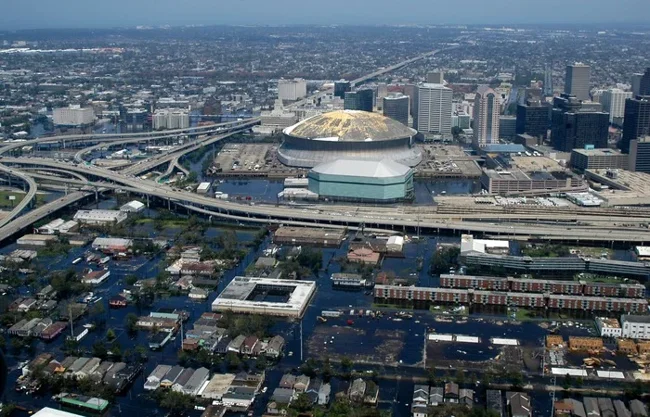
New Orleans, Louisiana (August 31, 2005) — Aerial view from a U.S. Navy helicopter.
This Day in History
This city, in principle, should have been prepared for such a natural disaster. The existing system of canals and levees at the time was supposed to prevent the city from flooding. But it didn't. As it was later discovered, the levees were built using sand, not clay, which is easily washed away by water. Furthermore, some of the levees were in near-peril.
"We repeatedly pointed out that these levees were built in soft soil areas and were highly susceptible to erosion and failure. They told us that these were federal levees, built to federal standards. They wouldn't fail," said Ivor Van Heerden, co-director of the Hurricane Center at Louisiana State University.
State and federal officials were aware of the levee problems. According to Louisiana Senator Mary Landrieu, the Army Corps of Engineers (the organization that oversees US water infrastructure) had been requesting approximately $500 million since 2001 to modernize New Orleans' system of levees, locks, and pumping stations. However, the George W. Bush administration allocated only $166 million. However, Congress later increased the amount to $250 million.
Ten years before Hurricane Katrina, Van Heerden developed computer storm surge models that showed the likelihood of the city being flooded by a major hurricane. Although his work attracted the attention of the Federal Emergency Management Agency (FEMA), it appears they never fully grasped the region's vulnerability. "But, you know, a lot of federal officials were just laughing behind the scenes," Van Heerden later lamented.
So, it was quite natural that with the arrival of the powerful hurricane, the water breached the protective structures in several places, and 80% of the city was under water, with depths reaching up to 4 meters in some areas. Between 140,000 and 160,000 homes were flooded. 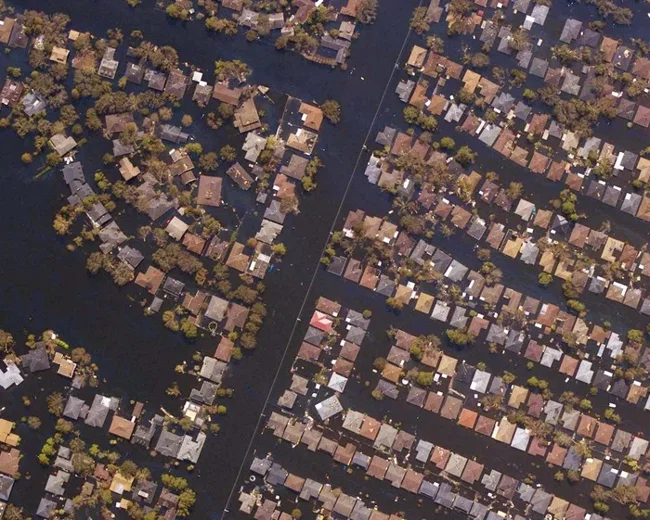
For weeks after the disaster, bodies were unhooked from trees, pulled from attics, and stored in makeshift morgues. For example, in St. Bernard Parish, rescuers found more than 30 bodies in just one nursing home.
Hurricane Katrina became the first major test for the emergency response system created by the George W. Bush administration. And the Department of Homeland Security and the Federal Emergency Management Agency (FEMA) failed this test resoundingly – it took them not hours, but days, which amounted to a week, to launch the rescue operation.
On August 30, Bush decided to cut short his vacation at a ranch in Texas. Returning to the capital, he flew over Louisiana and Mississippi. But it wasn't until September 2, during a second flight over the disaster-stricken regions, that the president was able to assess the true scale of the disaster and acknowledge that the rescue operation had begun too late and that control of the situation in New Orleans had been lost. 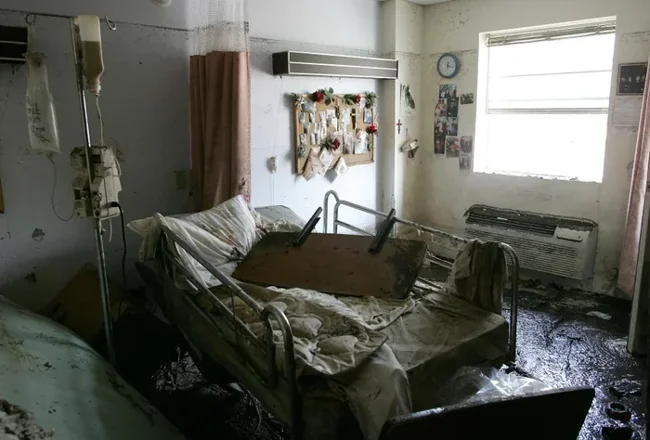
A hospital bed in a room at St. Rita Nursing Home, September 14, 2005, in St. Bernard, Louisiana.
Michael Chertoff, Secretary of Homeland Security, later admitted that they had a contingency plan for New Orleans, but it apparently didn't anticipate a levee breach and floodwaters pouring into the city.
After the hurricane, a White House investigation uncovered numerous shortcomings in the storm preparation and response at FEMA and the Department of Homeland Security. Specifically, it found that many senior officials were simply unfamiliar with the national response plan. And the agency's director, appointed by the president, had no experience in emergency management. He resigned two weeks after the hurricane.
"Enormous plans, fathoms of scale!"
The shock of the scale of the disaster and the pain of loss gradually subsided, especially as hope gleamed that such a horror would never happen again – the US federal government, Louisiana authorities, and insurance companies collectively allocated more than $140 billion for the region's recovery, including the construction of robust structures designed to protect New Orleans, much of which lies below sea level, from further flooding.
$140 billion! Adjusted for inflation, that's more than the Marshall Plan spent on rebuilding all of Europe after WWII. Judging by the budget, this project should have been one of the largest post-disaster reconstruction programs in US history. It should have been. But it wasn't. 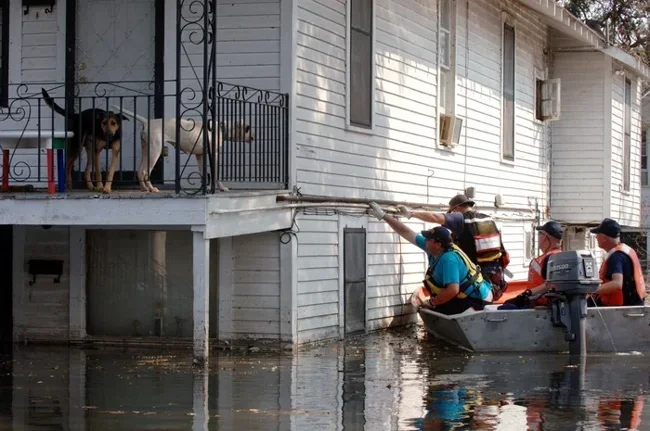
New Orleans, September 5, 2005 — FEMA Urban Search and Rescue Team members and the U.S. Coast Guard search for victims of Hurricane Katrina.
Twenty years later, New Orleans has a new flood protection system, but its reliability and ability to protect against flooding are questionable – the city's streets flood even during normal rainstorms, and drainage systems regularly fail. Furthermore, many other problems, exacerbated by the hurricane, remain unresolved. And the question is increasingly being asked: were the colossal funds allocated for the city's restoration and protection effectively spent?
The waters have receded. The money has disappeared?
The story of the $140 billion investment has become a textbook example of bureaucratic confusion and ineffective (to put it mildly) spending.
It turns out that having money isn't everything! Money alone isn't enough, even if there's a lot of it. What's needed is political will, a clear understanding of priorities—what needs to be done first, what second, and what can be skipped altogether—and, of course, strict oversight of both spending and the execution of all work. All of this has created problems.
"Despite the nostalgia, there's absolutely no need to rebuild everything 'as it was.' The disaster must be used to build more modern, safer facilities," Edward Blakely, Emeritus Professor at the University of Sydney.
Funds were wasted on a maze of state and local governments with conflicting priorities, vague metrics, and weak accountability. Enormous resources were scattered across a multitude of small projects, many of which were only tangentially related to real hurricane protection. Billions of dollars were spent on dozens of contractors and government "consultants," while public institutions, schools, public transportation, healthcare, and housing barely made ends meet.
Some "recovery" programs were simply financial aid to private corporations.
For example, $200 million in federal aid was allocated to Entergy, the main electricity provider in New Orleans. However, despite awarding the company this large sum, authorities did not even require a guarantee of grid restoration that would ensure resilience to future hurricanes. Therefore, when Hurricane Ida struck Louisiana in 2021, thousands of Entergy customers were again left without power for several weeks. 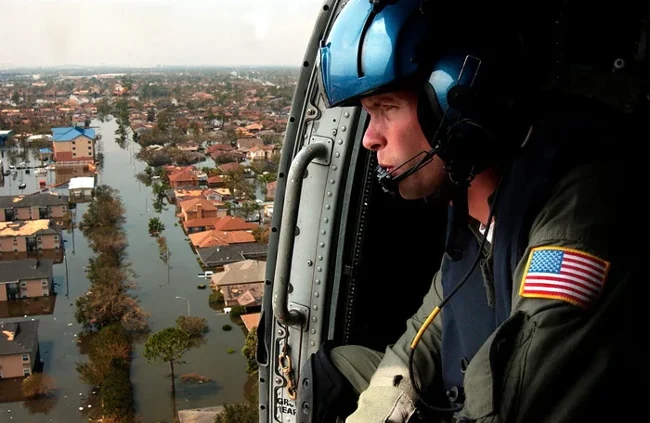
US Coast Guard personnel search for survivors.
Huge investments could have turned New Orleans into a model high-tech city. However, the primary focus was not on building something more durable and modern, capable of preventing similar disasters in the future, but simply on restoring what had been lost.
As a result, a significant portion of the allocated funds was spent on:
restoring infrastructure, which remains vulnerable to another disaster.
secondary, expensive projects that led to cost overruns.
temporary solutions and half-measures that did not address the problem systemically.
Instead of building a unified, well-designed, and reliable system of dams and barriers, funds were spent selectively and often without a strategic plan. The result is a hodgepodge of protective structures in varying states of readiness and effectiveness. 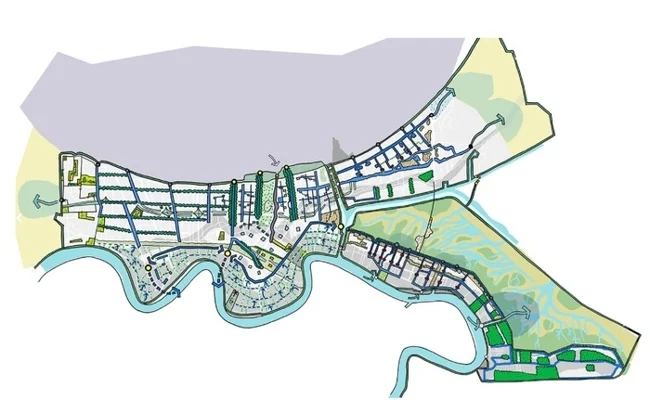
Divestment Project.
Have Lessons Been Learned?
Hurricane Katrina caused approximately $125 billion in damage, making it the costliest hurricane in U.S. history. Rebuilding New Orleans' levees to withstand a similar storm cost nearly $15 billion. The main lesson of the disaster is that massive expenditures AFTER a disaster can never replace strategic investments BEFORE it. Authorities chose to pay for the consequences rather than invest in prevention because they were simply inadequately prepared for emergencies of this magnitude.
And this truth didn't need years of investigation to prove. Just a week after the disaster, U.S. senators called the hurricane response inadequate. They believed that serious shortcomings in the federal government's operations had become increasingly apparent.
By the way, here's a fairly detailed description of how the US government responded to the disaster and how they acted during it. It's an engaging read. I recommend it.
Twenty years after the disaster, New Orleans ranks among the lowest among large US cities in GDP per capita. The city's population has fallen by about a quarter compared to 2000 levels. Some schools and hospitals still haven't reopened, and the public transportation network hasn't been fully restored. In many neighborhoods, numerous empty houses, overgrown lots, and the absence of businesses remind people of the disaster that occurred before they were born.
New Orleans today is the city with the highest levels of income inequality, where nearly one in three children lives in poverty, and among black children, this figure reaches 43%.
New Orleans is smaller, poorer, and social inequality is worse than before the hurricane. The city is largely deprived of basic services and a powerful economic engine, with the exception of the tourism industry. The $140 billion in damages largely saved the city's life, but didn't fully restore its health.
It seems the city is still living in anticipation of the next Katrina...





















